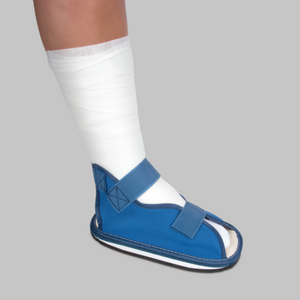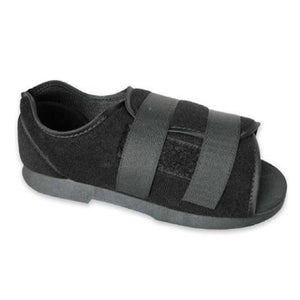Running shoes keep your feet comfortable and safe during your runs. They eventually wear out and lose their ability to support and protect your feet.
Knowing when to update your running shoes is critical to avoiding injuries and maintaining peak performance.
Here are ten signals that you should replace your running shoes.
Outdated Running Shoes? Signs to Look for
Let’s discuss some key signs to look for to ensure your running shoes are still in good condition and provide the support you need.
1- Worn-Out Treads
The bottom part of your shoes, called the outsole, has treads that provide grip. When these treads wear out, they become smooth and slippery, decreasing traction and increasing the danger of slipping.
Good treads help maintain stability, especially on wet or uneven surfaces. Worn treads can cause accidents and make your runs unsafe.
2- Decreased Cushioning
Running shoes have cushioning materials like foam or gel that absorb impact. Over time, this cushioning compresses and loses its ability to protect your feet from the effects of running.
Without proper cushioning, your joints and muscles absorb more shock, leading to discomfort and increasing the risk of injuries like shin splints or knee pain.
3- Visible Creasing or Cracks
Look at the midsole and the upper part of your shoes. If you see deep creases or cracks, the materials are breaking down.
These signs indicate that the shoe's structural integrity is compromised. It can cause inconsistent support and pain when running.
4- Increased Aches and Pains
If you start to feel unusual aches, pains, or soreness in your feet, ankles, knees, or hips, it might be due to inadequate shoe support.
Proper running shoes provide support and alignment. When they wear out, they fail to align your body correctly, leading to overuse injuries.
Learn how to keep good circulation in your feet and toes.
5- Uneven Wear
Check whether one side of the shoe is worn more. It can happen on the outsole, midsole, or even the upper.
Uneven wear can alter your gait (how you run), leading to discomfort and potential injuries due to imbalanced support.
6- Loose or Broken Parts
Inspect your shoes for loose stitching, detached soles, or broken eyelets (where the laces go through).
These issues can affect the fit and function of the shoe, making it less supportive and more likely to cause blisters or discomfort.
7- Exceeding Mileage
Running shoes are generally designed to last between 300 and 500 km. If you log your running mileage, you can determine when you have achieved this range.
Even if your shoes appear in good condition, interior materials (such as padding) degrade with use. When you reach the mileage limit, it's time to replace them to ensure continuing support and performance.
8- Loss of Fit
The shoe materials can stretch or lose shape over time, leading to a looser fit.
A proper fit is crucial for comfort and support. Loose shoes can cause blisters and foot slippage and reduce your running efficiency.
9- Outdated Model
Shoe technology advances, and newer models offer better support, cushioning, and features.
Sticking with an old model for too long might mean missing out on improvements that can enhance your running experience and reduce the risk of injury.
10- Foul Odor That Won’t Go Away
Persistent foul odor despite regular cleaning can indicate bacterial buildup that has penetrated the shoe materials.
Foul odors are unpleasant and can indicate unhealthy conditions for your feet, potentially leading to infections or skin issues.
8 Tips to Choose the Right Running Shoes
Selecting the right running shoes is critical for comfort. Here are some basic ideas to help you choose the perfect pair:
1- Know Your Foot Type
Everybody has unique feet. Some people's arches are high, while others have flat feet. Neutral arches are seen in some.
Use the "wet test" at home or evaluate your feet in a running store. To determine the sort of arch you have, wet your foot and tread on some paper.
2- Consider Your Running Style
How you run affects what kind of shoes you need. Do you run on your toes, midfoot, or heel?
Pay attention to how your foot hits the ground, and choose shoes that support your running style.
3- Check the Cushioning
Cushioning protects your feet and joints by absorbing impact.
Decide if you prefer a lot of cushioning (softer feel) or less cushioning (firmer feel). Try different shoes to see what feels best.
4- Ensure Proper Fit
If your shoes fit well, they should be roomy enough for your toes and snug but not too tight.
Ensure that the distance between the end of the shoe and your longest toe is the width of a thumb.
Your heel should not slip, and the shoe should feel comfortable all around your foot.
5- Consider Shoe Weight
Heavier shoes can provide more support, while lighter shoes make you feel faster and more agile.
You might want more support (heavier shoes) if you're running long distances. For shorter, faster runs, a lighter shoe might be better.
6- Wear Your Running Socks
The thickness of your socks affects the fit of your shoes. Bring the socks you usually wear when running to try on with the boots.
7- Test Them Out
Just walking around in the store is not enough. You need to feel how the shoes perform when running.
Most running stores have a treadmill or allow you to take a short run outside. Take advantage of this to test the shoes.
8- Don’t Choose by Looks Alone
The appearance of the shoe does not indicate its performance. Focus on fit, comfort, and function rather than color or style.
Use MoovKart Surgical Shoes to Take Good Care of Your Feet
If you get injured while running, taking care of your feet is important for a speedy recovery. MoovKart offers high-quality surgical shoes that provide the support and comfort you need during healing.
Visit Moovkart today to find the right surgical shoes.
People Also Ask!
Q1. How can I determine whether I should buy new running shoes?
A1. Look for worn-out treads, decreased cushioning, visible creasing or cracks, and increased aches or pains. These signs indicate that your shoes are no longer providing proper support.
Q2. How many miles can I typically run before replacing my shoes?
A2. Running shoes last between 300 to 500 miles. Even if they look fine, the internal materials degrade over time, so tracking your mileage is important.
Q3.Why does uneven wear on my running shoes mean I need new ones?
A3.Uneven wear can alter your running gait and lead to discomfort and injuries. Replacing your shoes ensures balanced support and helps maintain proper running form.








